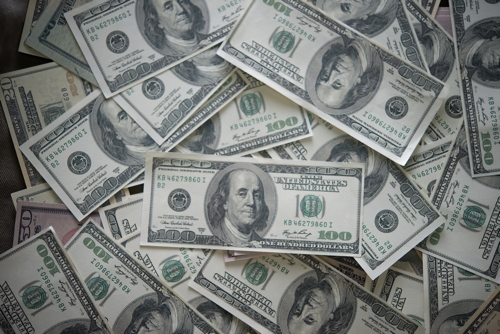





Recent News
0 • 07-10-2025
Fed Officials Split on Timing and Scale of Rate Cuts as Economic Signals Diverge

0 • 07-04-2025
Trump’s ‘Big Beautiful Bill’ Wins Congressional Approval

0 • 06-19-2025
Dow Dips Slightly as Fed Signals No Rush to Cut Rates

0 • 06-13-2025
Oil Prices Soar Over 7% Following Israeli Strikes on Iran
Recent News

0 • 07-04-2025
Trump’s ‘Big Beautiful Bill’ Wins Congressional Approval

0 • 06-19-2025
Dow Dips Slightly as Fed Signals No Rush to Cut Rates

0 • 06-13-2025
Oil Prices Soar Over 7% Following Israeli Strikes on Iran

0 • 07-16-2025
Daily Review 16 July 2025
0 • 07-15-2025
Daily Review 15 July 2025
0 • 07-14-2025
Daily Review 14 July 2025

0 • 07-16-2025
Daily Review 16 July 2025
0 • 07-15-2025
Daily Review 15 July 2025
0 • 07-14-2025
Daily Review 14 July 2025
Recent News
0 • 07-10-2025
Fed Officials Split on Timing and Scale of Rate Cuts as Economic Signals Diverge

0 • 07-04-2025
Trump’s ‘Big Beautiful Bill’ Wins Congressional Approval

0 • 06-19-2025
Dow Dips Slightly as Fed Signals No Rush to Cut Rates

0 • 06-13-2025
Oil Prices Soar Over 7% Following Israeli Strikes on Iran
Recent News

0 • 07-04-2025
Trump’s ‘Big Beautiful Bill’ Wins Congressional Approval

0 • 06-19-2025
Dow Dips Slightly as Fed Signals No Rush to Cut Rates

0 • 06-13-2025
Oil Prices Soar Over 7% Following Israeli Strikes on Iran

0 • 07-16-2025
Daily Review 16 July 2025
0 • 07-15-2025
Daily Review 15 July 2025
0 • 07-14-2025
Daily Review 14 July 2025

0 • 07-16-2025
Daily Review 16 July 2025
0 • 07-15-2025
Daily Review 15 July 2025
0 • 07-14-2025
Daily Review 14 July 2025
Risk Disclosure:Derivatives are traded over-the-counter on margin, which means they carry a high level of risk and there is a possibility you could lose all of your investment. These products are not suitable for all investors. Please ensure you fully understand the risks and carefully consider your financial situation and trading experience before trading. Seek independent financial advice if necessary before opening an account with BCR.
Jurisdiction Notice:Our services are not intended for residents of the United States & Canada, and we do not intend to distribute or use the provided information in any country or jurisdiction where it would be contrary to local law or regulation. It is important that you read and consider the relevant legal documents associated with your account, including the Terms and Conditions issued by BCR before you start trading. BCR Co Pty Ltd is regulated by the British Virgin Islands Financial Services Commission, Certificate No. SIBA/L/19/1122. The Registration Number in the BVI is 1975046. The Registered Address of the Company is Trident Chambers, Wickham’s Cay 1, Road Town, Tortola, British Virgin Islands.